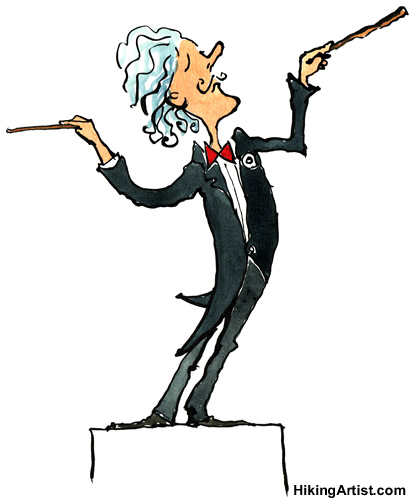
The Rhythm of the Narrative
A book is like a piece of music, it has to have a rhythm. This is one of the key elements to keeping the reader turning the pages. Like in music, the rhythm is composed of various tools.
The main ones are:
– The structure of the sentences
– The balance between narration, descriptions, and dialogues
– The position of the narrator
– The tone
The Structure of the Sentence
We can easily imagine that an entire book written with sentences following the format “subject, verb, complement” might be a potent sleeping aid, but would be a flop as far as literature of any genre is concerned.
“John got out of bed. He told his mother that he would be gone the whole day. He left the house.” Boring, boring boring.
The rhythm would be more palatable like this: “As he got out of bed, John told his mother he would be gone all day and left the house.” Still not great but slightly better, as we have introduced a sense of time and movement.
“”I’ll be gone all day, Mother”, said John, leaving the house just after he got out of bed.” Better, here we have a clear sense of timing of the action, an indication of the kind of relationship between John and his mother, as he calls her Mother and not Mum. So simply by modifying a few elements in the structure of the sentence, we have considerably enriched the narrative. The reader might still be awake and even interested.
The balance between narration, descriptions, and dialogues
Let’s start again with a ‘what not to do’ example
“John lived with his mother. John’s home was a shack. The shack was made out of cardboard and plastic bin bags. John got out of bed. It was twelve o’clock. He told his mother that he would be gone the whole day. He left the house.” This contains only narrative, no description, no dialogue – and no variation in sentence structure either. Now let’s integrate both description and dialog.
“It was already twelve o’clock when John jumped out of bed. “I’ll be gone all day, Mother!” he said as he rushed out of the cardboard shack they called home, almost ripping out one of the black bin bags that failed to waterproof the place.” Now we have time, movement, urgency, a sense of misery and a lot of info about John’s life. All in one sentence, that includes dialog, description, and narration.
The Position of the Narrator
This has been covered yesterday, yet, variations in the type of narrator can come in handy in introducing diversity in the narrative rhythm.
For example, when a novel includes letters, diary extracts, memories, dreams etc as part of the narrative, either by alternating chapters or through integrating them in the narrative.
An omnipotent narrator can be combined with a first-person narrator.
“Now that John was gone for the day, his mother read his diary. ‘Lisbeth got what was coming to her, today, the filthy whore,’ it read. ‘She should never have betrayed me. When I saw her with Willy the Wimp…”
Now the narrator is John, and not a third-person narrator anymore.
Such shifts in the narrator’s position are tricky to achieve seamlessly, but they are a great tool in enriching the rhythm and tonality of the narrative
The Tone
There are many different tones and variations within each tone. Let’s just examine a few. Dramatic, fantastic and sarcastic for example.
Let’s try it.
Dramatic
“Fed by the darkness hovering in the recess on St Andrew Chapel, Jane’s anguish about her sister was almost choking her. Overcoming her deep-rooted respect for everything holy, she extracted her mobile phone from her purse.”
Fantastic
“St Andrew’s statue jumped from its pedestal and dialed for her. Lisbeth’s voice poured out of his mouth in a whisper.”
Romantic
“In a dreamy tone, she said “Willy killed me softly with his caresses,” then her voice turned harsh to finish the sentence “John killed me brutally with his excesses.”
Even a non-editor can see that having these three passages as a single story flow would not work. The reader would be lost, not knowing what the hell it is he is reading. AS for everything else in fiction writing, there is only one cardinal rule, the tone has to have consistency. A writer cannot simply mix and match haphazardly. Tone variations have to make sense and be coherent with the content.
Like music, writing is an art. Rhythm is an essential part of the composition. Though we are painting a story with words, it has to sound harmonious. 🙂